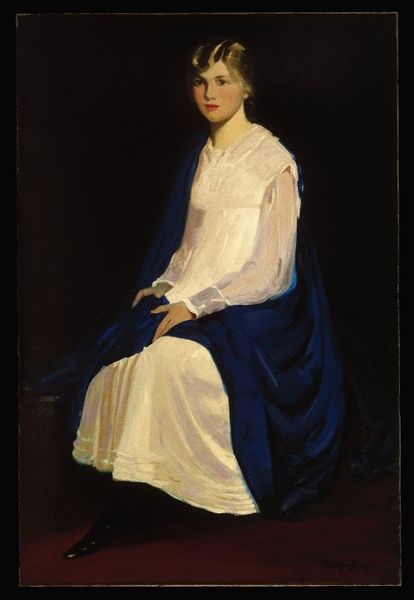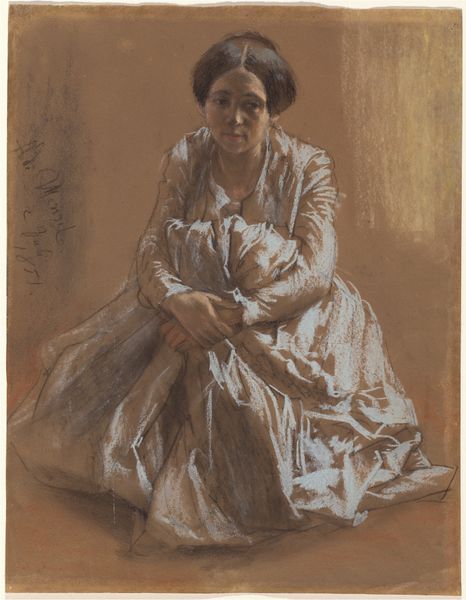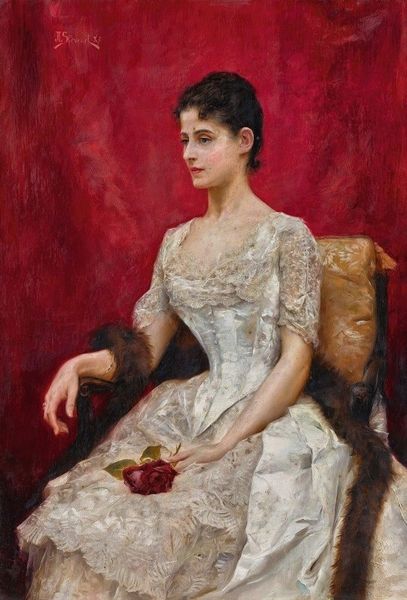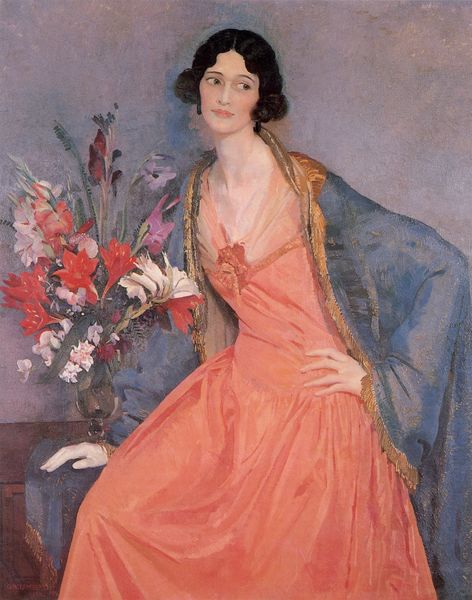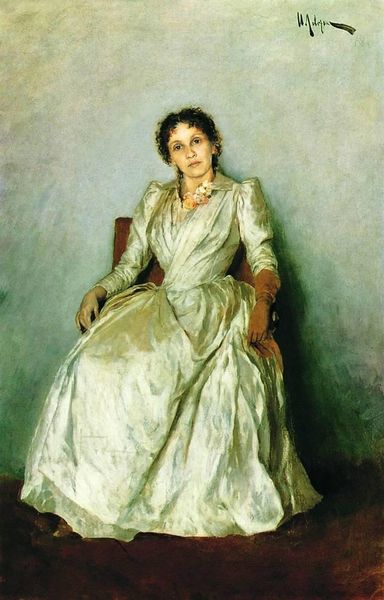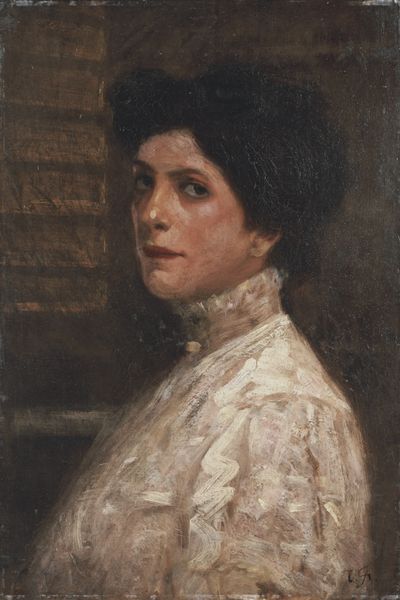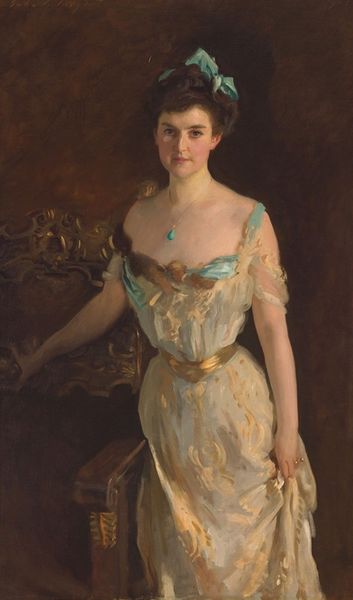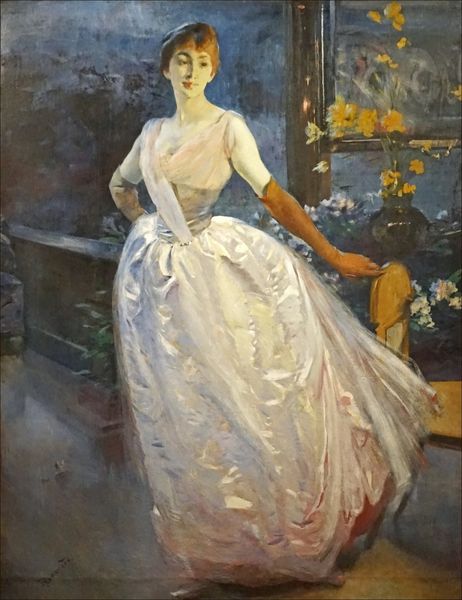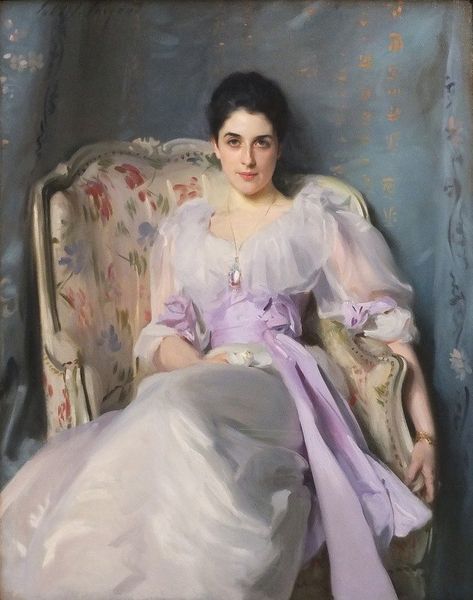
Copyright: Public domain
Editor: This is Antonio de La Gándara’s "Madame Johannès Gravier (fille Naturelle De L’artiste)" from 1917, created with oil paint. The muted colors and the subject's melancholic expression create such a somber mood. I'm curious, how does this portrait resonate within its historical context? Curator: That's an excellent question. La Gándara was very much a painter of Parisian society. Looking at this work, we see how portraiture served as a tool for constructing identity, particularly within the French elite. Her positioning and dress are carefully constructed to portray status and, in this case, a hint of bohemian sensibility. But consider the title; the addition ‘fille Naturelle De L’artiste,’ or ‘natural daughter’ acknowledges, and yet subtly obscures the subject's full identity. Why do you think that is? Editor: Perhaps it’s a reflection of the societal constraints of the time? Even acknowledging their relationship seems a delicate dance. The almost performative aspect is palpable, this carefully constructed public image hiding the details of her parentage while publicly outing it at the same time. Curator: Precisely! The work functions as a piece of social commentary, highlighting the nuanced ways that identity and relationships were navigated, publicly and privately. It shows us how art can be both a celebration of beauty and a reflection of societal complexities. Also how an art gallery can publicly “air out dirty laundry”. The canvas served almost as today’s tabloids. Editor: I never would have considered it that way. So, beneath the aesthetic appeal of a society portrait, there’s also a deeper examination of the era's socio-political atmosphere, influencing and even complicating relationships. Curator: Exactly. It makes us think about the museum’s, and indeed our own, role in preserving and presenting such potentially provocative artworks to a modern public. How much is too much access and how much is withheld by artistic choice, if anything at all. Editor: This has really opened my eyes to how a portrait can function on so many levels – not just as a likeness, but as a historical document and a piece of social discourse. Thank you. Curator: My pleasure. I am always happy to see art through the lens of the contemporary art world. It opens so many possibilities and opinions.
Comments
No comments
Be the first to comment and join the conversation on the ultimate creative platform.
